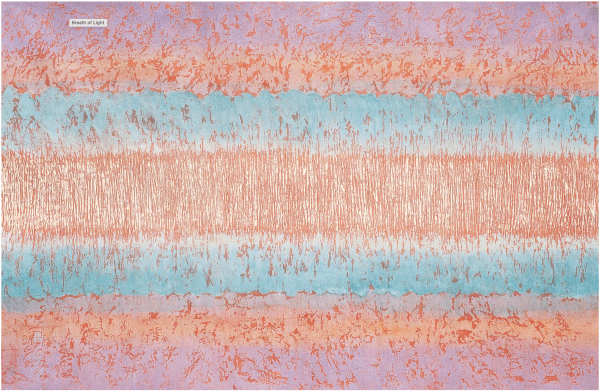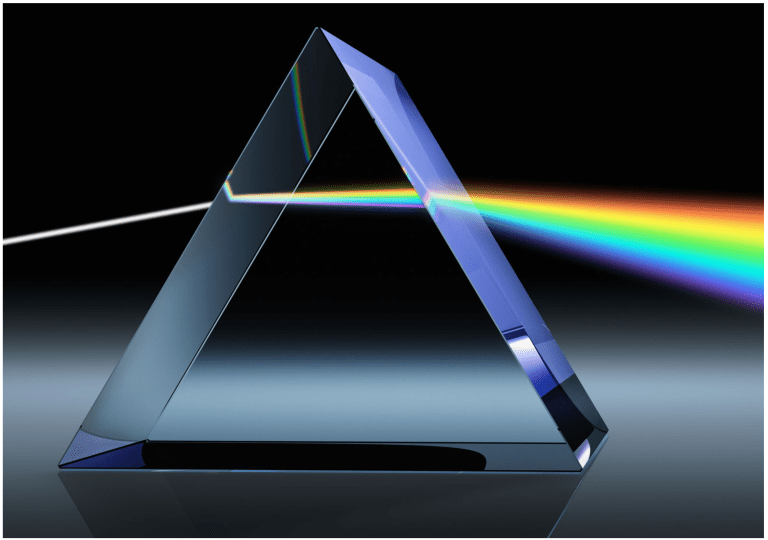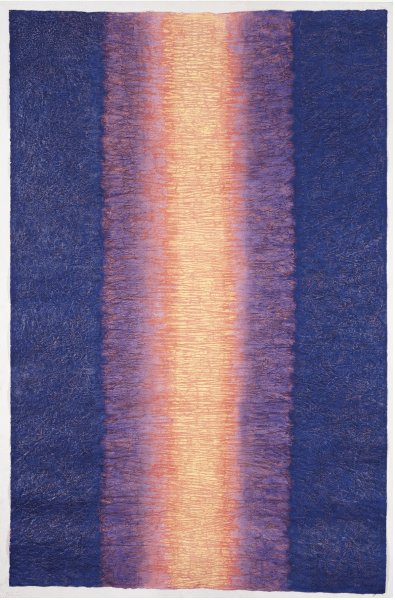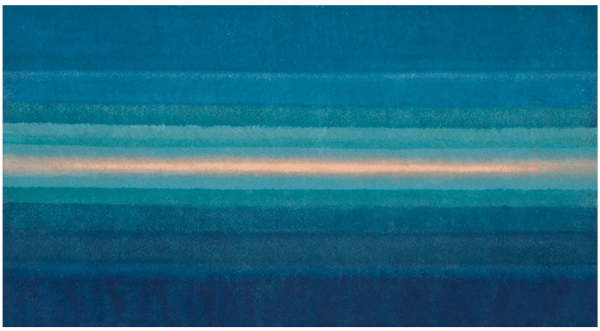Home Art Project 8: Light, colour and materials, Bang Hai Ja

Light and colour have always been a central element of most art practices. Some art movements such as Impressionism, were heavily impacted by 19th century developments in the theoretical understanding of light and colour.
What does light mean to us? Is it important to us because it supports life, or enables the physical world to be seen, or perhaps because it gives us colour? Does it take on a more significant symbolic meaning for us, because of all these characteristics.

An artist whose work is deeply entrenched in light and colour is Bang Hai Ja (b. 1937, Korea). Her work bridges the Eastern calligraphic tradition and Western abstraction. She uses Korean paper which is hand made from leaves and plants in a tradition originating from Buddhist nuns. This paper can be shaped and rumpled. Bang Hai Ja also uses an unwoven fabric known as geotextile. She likes this materials for its transparency. She places her fabric on the floor where she will paint both sides of it, allowing the paint to bleed through the material and the colours to mix, leaving subtle colour transitions and variations.

This project is the experimentation with various papers and cloths that you find using any mediums you may have. The medium may be markers, water colour paint, gouache or acrylic paint.
Think about the following:
- What are the characteristics of the paper or cloth you have. Can this material be rumpled or folded. How does that impacts its acceptance of your medium?
- How does your medium flow through the material. If you are using water based paint, can you thin the paint with water and what happens when you apply it?
- Can you apply the medium from both sides?
- Which colour combinations look good together and how can your colours mix effectively?
- Can you add a different medium?

Children’s text
White light can pass through a glass prism and be split in to all the colours of the rainbow. This shows that white light is made of coloured light. A rainbow is the result of the splitting of white light when it passes through water droplets in the air. The water droplets act like a prism to the white light.
What does light mean to us? Is it important to us because it supports life, or enables the world to be seen or perhaps because it gives us colour?
An artist whose work is about light and colour is Bang Hai Ja. She was born in Korea but lives in France. She uses Korean paper which is hand made from leaves and plants. This paper can be shaped and rumpled. Bang Hai Ja also uses an unwoven fabric known as geotextile. She likes this materials because it is transparent or partially see-through. She places her fabric on the floor where she will paint both sides of it, allowing the paint to bleed through the material and allowing the colours to mix.
This project is about experimenting with various papers and cloths that you can find. You can use markers, water colour paint, gouache or acrylic paint to put on the cloth or paper.
Think about the following:
- Can the paper or cloth be rumpled or folded. How does that impact its acceptance of your medium (paint, markers)?
- How does your medium flow through the material. If you are using water based paint, can you thin the paint with water and what happens when you apply it?
- Can you apply the medium from both sides?
- Which colour combinations look good together and how can your colours mix effectively?
- Can you add a different medium?